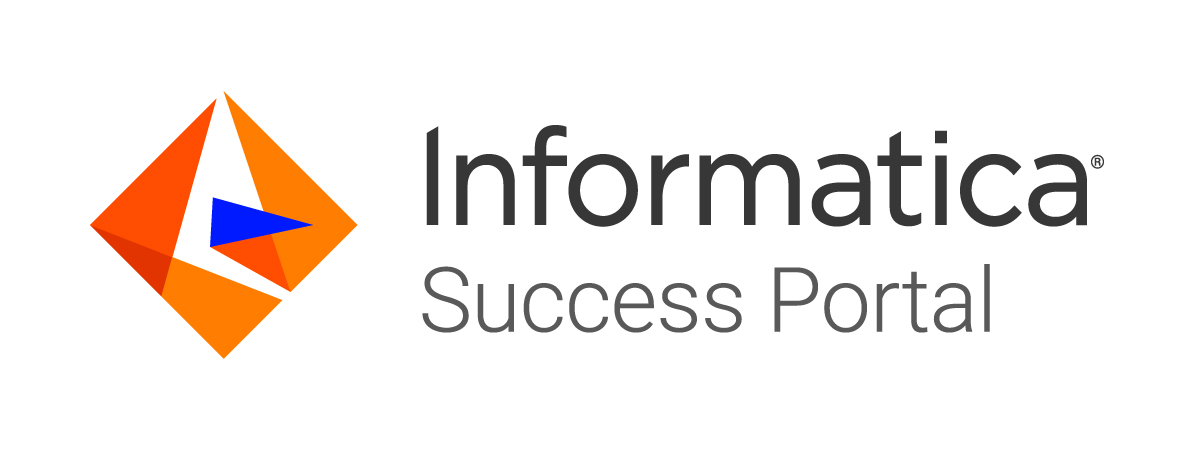-
Manage your Success Plans and Engagements, gain key insights into your implementation journey, and collaborate with your CSMsSuccessAccelerate your Purchase to Value engaging with Informatica Architects for Customer SuccessAll your Engagements at one place
-
A collaborative platform to connect and grow with like-minded Informaticans across the globeCommunitiesConnect and collaborate with Informatica experts and championsHave a question? Start a Discussion and get immediate answers you are looking forCustomer-organized groups that meet online and in-person. Join today to network, share ideas, and get tips on how to get the most out of Informatica
-
Troubleshooting documents, product guides, how to videos, best practices, and moreKnowledge CenterOne-stop self-service portal for solutions, FAQs, Whitepapers, How Tos, Videos, and moreVideo channel for step-by-step instructions to use our products, best practices, troubleshooting tips, and much moreInformation library of the latest product documentsBest practices and use cases from the Implementation team
-
Rich resources to help you leverage full capabilities of our productsLearnRole-based training programs for the best ROIGet certified on Informatica products. Free, Foundation, or ProfessionalFree and unlimited modules based on your expertise level and journeySelf-guided, intuitive experience platform for outcome-focused product capabilities and use cases
-
Library of content to help you leverage the best of Informatica productsResourcesMost popular webinars on product architecture, best practices, and moreProduct Availability Matrix statements of Informatica productsMonthly support newsletterInformatica Support Guide and Statements, Quick Start Guides, and Cloud Product Description ScheduleEnd of Life statements of Informatica products
- Success Portal
- Learning Path
- Cloud Application Integration
Cloud Application Integration
Master API, App Integration, Automation, and GenAI App Development
In today's digital landscape, seamless integration between applications and data is crucial. Cloud Application Integration (CAI) by Informatica empowers you to bridge the gap between on-premises and cloud systems, fostering a truly connected ecosystem.
This comprehensive learning path is designed to guide you through the essential stages of building a powerful CAI strategy, from the initial setup to expert-level configuration and optimization.
What You'll Learn:
Each phase of this self-paced learning path progressively equips you with the skills and knowledge to conquer your integration challenges.
- Onboarding Essentials: Get started with CAI quickly and confidently by learning the basics of setting up your environment and navigating the platform.
- Configuration Mastery: Move beyond the basics and master essential configuration techniques for building robust and scalable integrations.
- Implementation Expertise: Explore in-depth how to implement CAI to solve real-world integration challenges, from simple data transfers to complex workflows.
- Optimization Best Practices: Uncover valuable best practices for optimizing your CAI deployments to ensure peak performance and efficiency.
- Ongoing Support: Continue your learning journey with community resources, documentation, and updates.
Who is it for?
This learning path is ideal for anyone who is equipped with or plans to implement CAI to streamline integrations and unlock new possibilities.
Pre-Requisites:
Before you start this course, it is recommended to complete the following prerequisites, which consist of three key modules:
- Interface Walkthrough: Get to know the CAI platform, explore its features, and understand its key tools.
- Creating a Hello World Process: Learn how to design, deploy, and test your first integration process.
- Creating a Service Connector: Discover how to create a connector to interact with APIs and integrate external services effortlessly.
Completing these modules will prepare you to engage with the main course material confidently.
Completion Incentive:
Complete all 5 phases to earn a completion badge that will appear on the 'Summary' page once you finish all the learning modules. This badge signifies your CAI proficiency and demonstrates your dedication to mastering this powerful integration platform.
Getting Started:
Before embarking on this journey, ensure you have access to CAI, either through your organization or a free trial. As you progress through the modules, we encourage you to explore the platform and apply your newfound knowledge.
